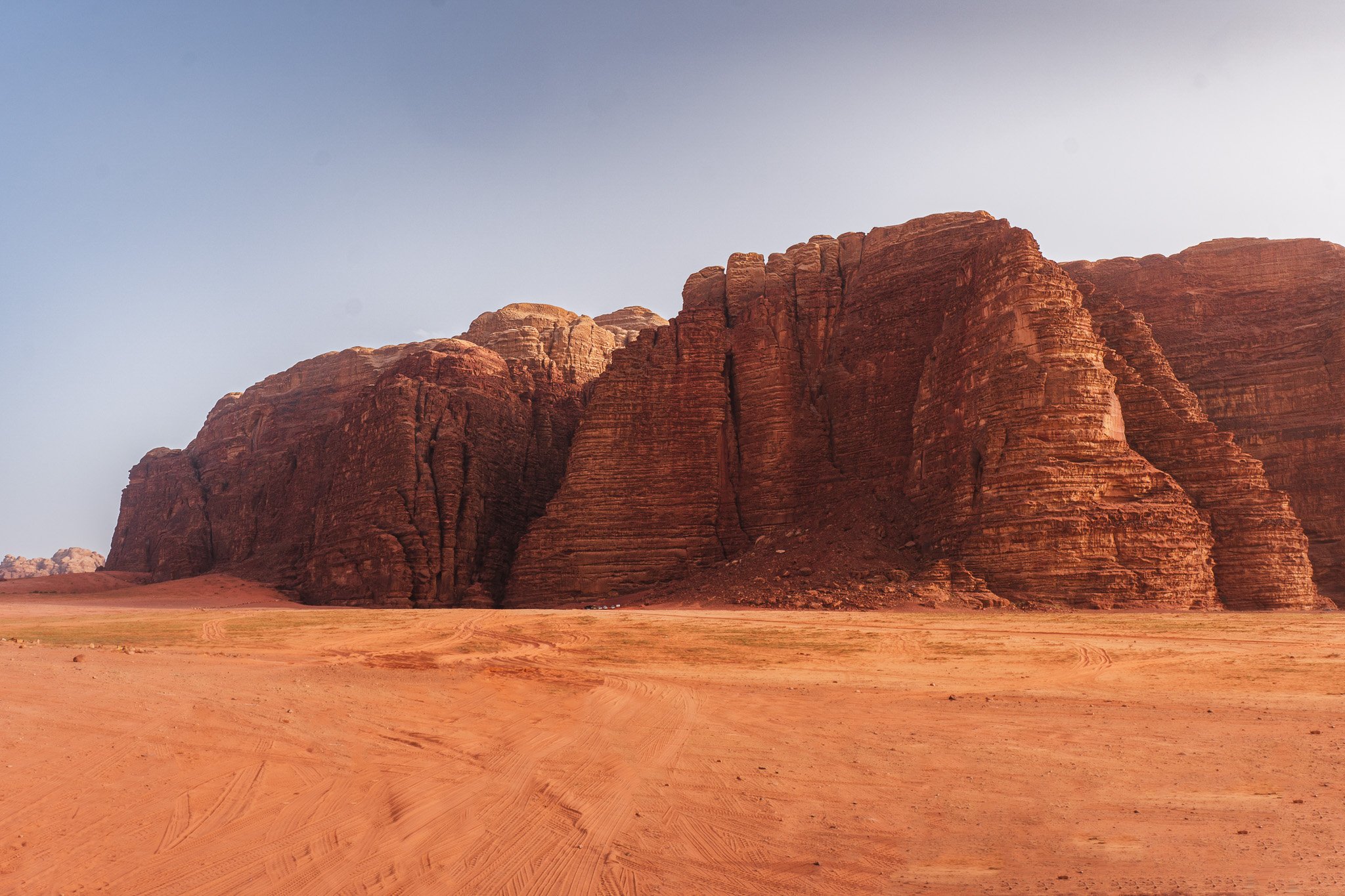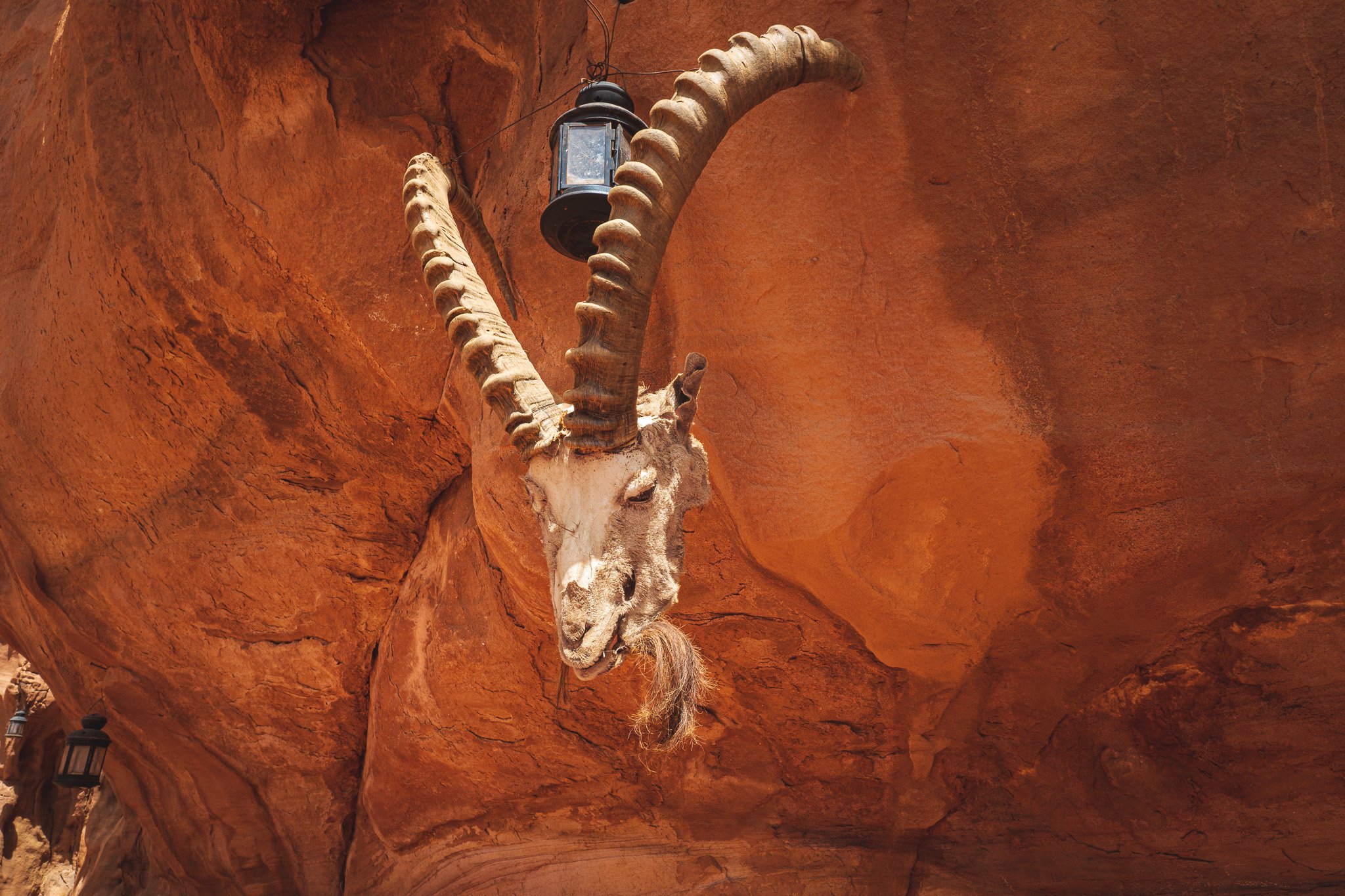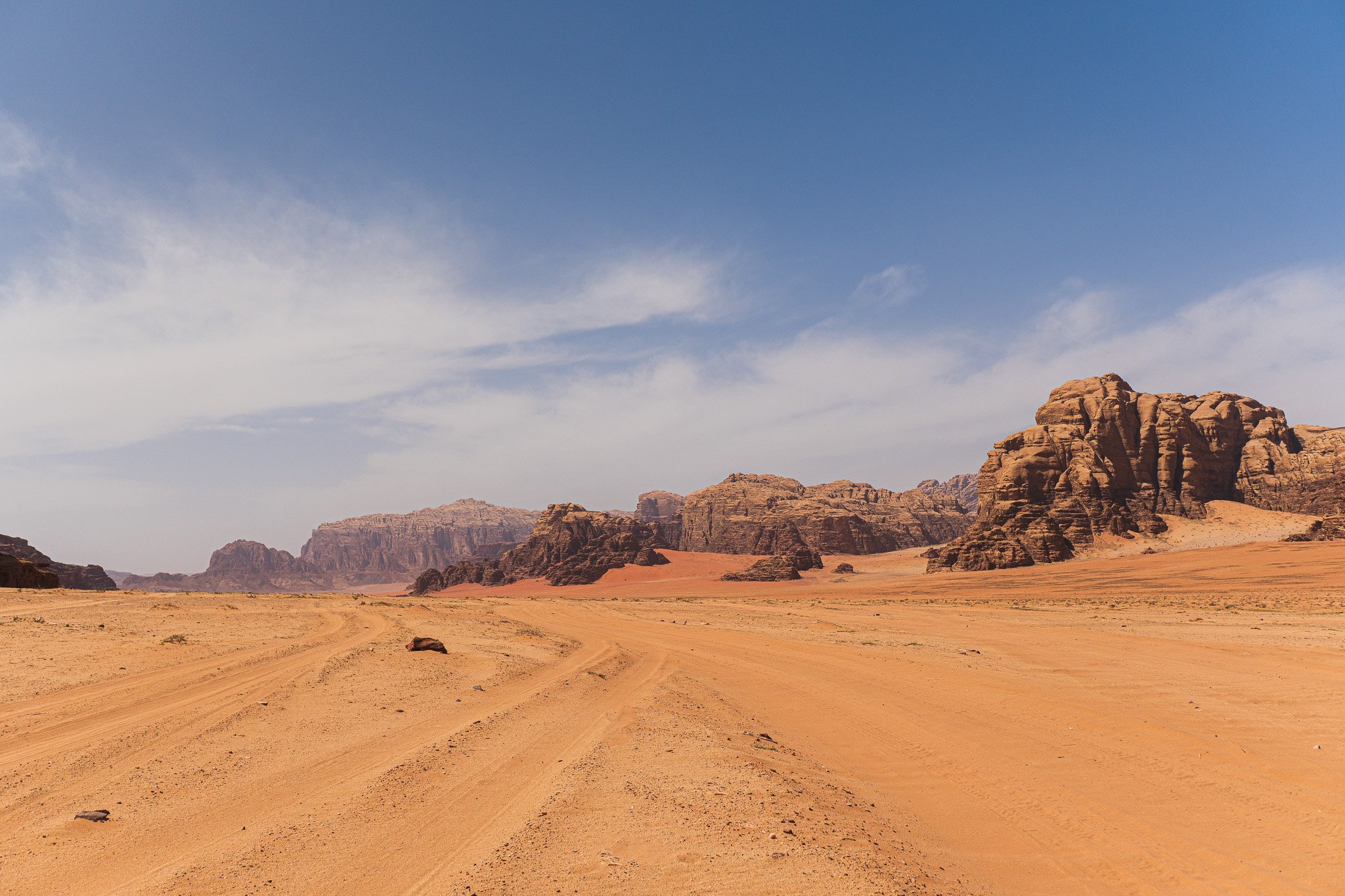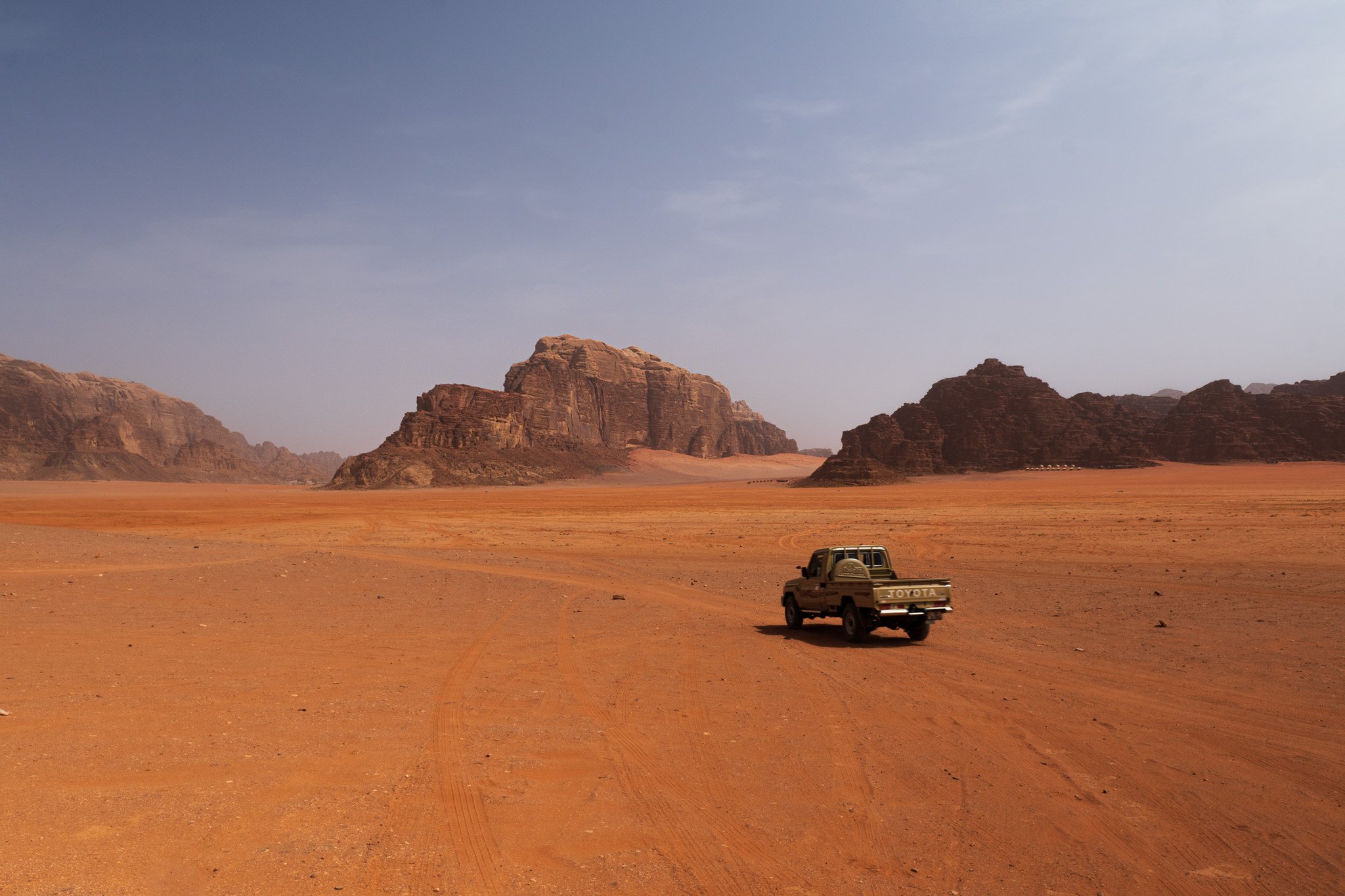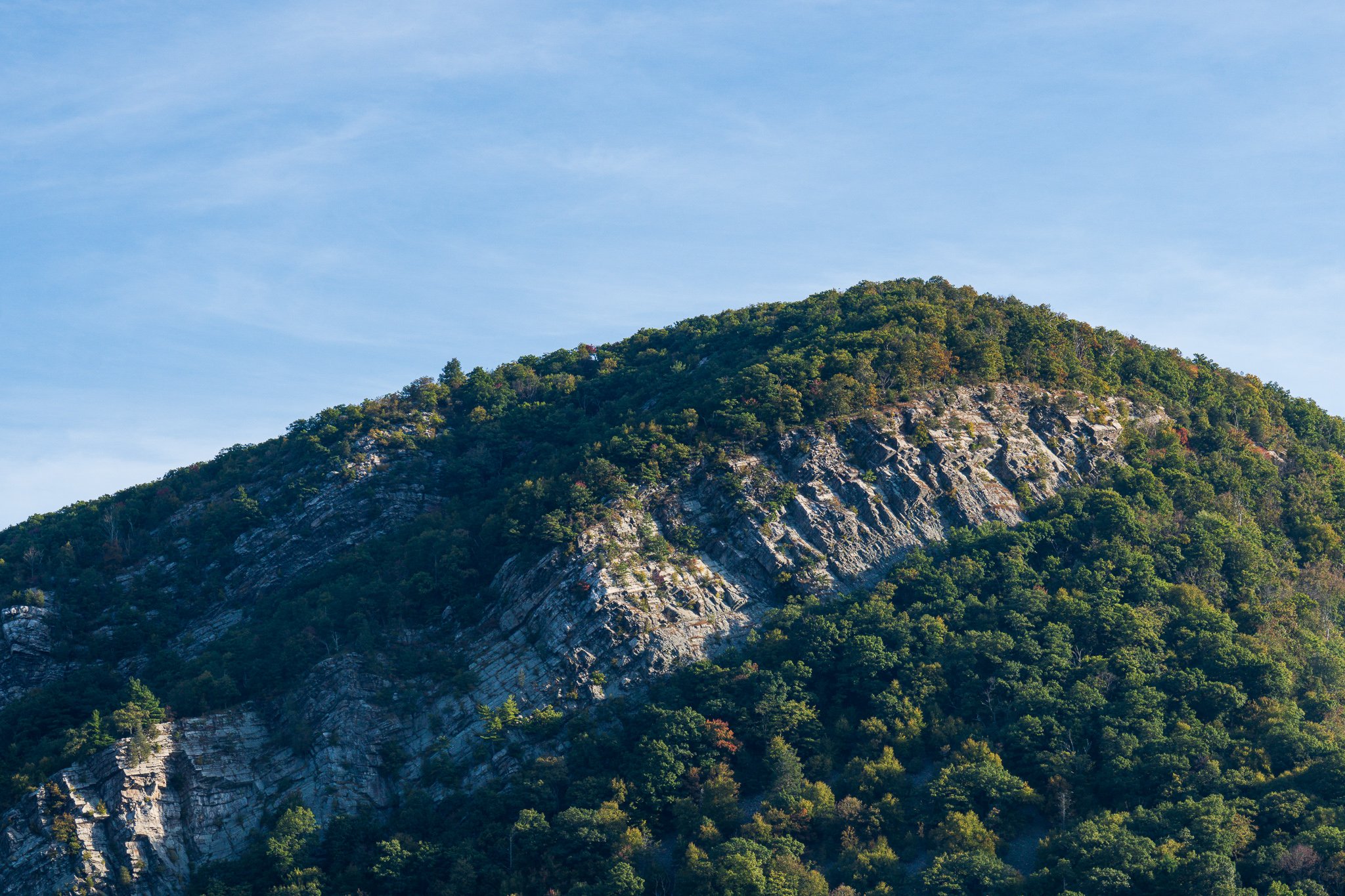Lost in the Sands: Solo Backpacking Across Jordan's Wadi Rum Desert

Intro:
I have known that I wanted to visit the Wadi Rum Desert in Jordan ever since I saw it featured in a rock climbing documentary in 2018. And I have subconsciously known I wanted to visit it ever since I saw it portrayed as Mars in “The Martian”, Arrakis in “Dune”, and Jedha in “Rogue One”.
I was drawn to Wadi Rum by the same otherworldliness that had seduced so many filmmakers in the past. And so, I set off to plan my middle eastern desert adventure. I poured over maps and satellite images for months trying to plan the perfect route through this rough landscape. It was not easy. There are no actual trails to speak of in this desert, just sporadic Bedouin camps and geographic landmarks, so land nav skills were a must.
In fact, in all my research I had only found two other people who have ever documented their solo multi-day backpacking trip in this desert. One in 2019, and one in 2022. I used both their routes as inspiration while also making it my own.
Getting to Jordan and Getting Detained:
I was able to secure a flight from New York to Istanbul, and then from Istanbul to Aqaba. It was a long exhausting day of travel, but holy hell does Istanbul have a nice airport. Much of Jordan is a cash economy, so I made sure to convert some US dollars to Jordanian dinars in Istanbul. Only enough for a taxi ride though, because the exchange rates were less than stellar in the airport.
I landed in Aqaba at a small, one baggage claim airport, at 1am. As a middle aged American male traveling alone, I must have stuck out like a sore thumb because I was singled out by security where I was escorted to a small smoke-filled room and had my luggage searched.
As I struggled to understand the commands in a foreign language, I realized that they were mainly concerned about my camera and drone equipment.
So apparently it is very much illegal to fly a drone in Jordan without written permission from the government. Good to know. They confiscated my drone, and got a lot friendlier when I tried speaking to them in broken Arabic. At least whatever Arabic I could remember from serving in Iraq 15 years earlier. Once we started to understand each other, any sense of tension dropped and these guys were actually very accommodating. It seemed routine to them, and they explained I could pick the equipment up from the same office on my way out of the country. They said “Welcome to Jordan” in a warm and sincere tone, and helped me find a taxi.
After crashing hard at the hotel for a few hours, I got out to explore the city of Aqaba for a bit. The only coastal city in the country, Aqaba played a pivotal role in the Arab Revolt against the Ottomans in WWI, as famously depicted in the 1962 film Lawrence of Arabia.
The history teacher and nerd side of me was beaming.
The entrance to Fort Aqaba
This door is over 1,600 years old. The chair, less so.
Like most middle eastern cities, the town was relatively sleepy during the heat of the day, and came alive just after sunset. The cafes and restaurants were too numerous to choose from, but I did my best.
Maria Speciality Coffee House, the most hipster part of Aqaba
After sampling what Aqaba had to offer, I headed back to the hotel staged my gear and prepped to head out to Wadi Rum in the morning.
Aqaba at night
Day 1: Staying with the Bedouins
As the sun rose over Aqaba, I stood outside the hotel and hailed a taxi for the hour drive to Rum Village on the outskirts of the Wadi Rum protected area.
A lonely tree stands at the entrance to Wadi Rum
Upon reaching the village, I was warmly welcomed by a representative of the local Bedouin tribe. They graciously hosted me at the 'Quiet Village Camp,' nestled at the base of a colossal rock wall. These Bedouins have traditionally had a nomadic way of life across the Hejaz region of the Arabian peninsula. However in recent years, as Wadi Rum has become more famous, they have established semi-permanent camps and based their economy on giving tours of different geological and archaeological areas of the desert.
‘Quiet Village’ Bedouin Camp
So I hopped in the back of their pickup truck and took them up on the offer to show me the best Wadi Rum had to offer. I was more interested in heading off on my own, but I thought it important to help support their economy if I was about to go trekking through their home. Plus it was also a great way to scout out potential campsites for the upcoming trek.
As the sun began to dip below the horizon, we returned to camp as it came to life with the aroma of dinner cooking in the traditional Bedouin way. A hole dug in the soft sand served as a makeshift oven, slowly cooking goat meat, rice, and vegetables on a layered metal rack. As the meat cooked on the top rack, the flavors mingled and infused with the rice and vegetables below, creating a unique middle eastern flavor.
After dinner, I was treated to a cup of hot tea while the sounds of an oud guitar permeated the camp, broken only by the soft crackling of the campfire.
The breathtaking views from earlier that day lingered in my mind. Looking at my photos and maps, I realized that one of those views was not far from the camp I was currently at. It was an expansive panorama overlooking the entire valley, and less than a mile’s walk away. So Instead of staying at the Bedouin camp that first night, I decided the opportunity of waking up to this view was too good to pass up.
A photo from earlier that day
As the sky turned from shades of pink to ink black, I packed up my gear and made the hike out to the overlook to spend the night under the stars. I would return to my Bedouin hosts for breakfast before heading out into the desert on my own.
Rum Village in the distance
Day 2: To the Dunes
As I slowly woke up, I was met with the sight of camels off in the distance, their skinny legs and humps silhouetted against the bright sand.
Already beginning to feel the heat of the desert sun, I marveled at the animals.
“How the hell did a mammal evolve to survive in such an inhospitable environment?”
… wondered the hairless ape backpacking through the desert.
I made my way back to the Bedouin Camp where Saleem, the camp manager, sat down with me and gave me advice for the journey ahead before sending me off with a full stomach and some additional water.
Just around the corner from camp was Khazali Canyon. The walls of the canyon act as a natural funnel collecting rainwater, making it an important place for multiple civilizations throughout time as shown by the Thamudic, Nabatean, and Islamic inscriptions dating back thousands of years.
Like all those that came before me in this valley, water management was going to be key. To compensate for the lack of water sources, I was carrying three times the amount of water I normally do on backpacking trips, six liters as opposed to two. The increase in weight was noticeable but manageable.
To refill, I had planned my route to periodically pass by other Bedouin camps where I would humbly request to purchase water if needed.
It was needed.
The sun was becoming brutally hot. But luckily I had prepared for it. My long sleeve ventilated ‘Columbia Silver Ridge’ hiking shirt kept me cool, my ‘Outdoor Research’ sun gloves reduced the need for sunscreen, but most importantly my shemagh was protecting my head, neck, and face.
I’ve hiked with both this head scarf (called a shemagh or keffiyeh) and a wide brimmed hat for sun protection before, and this did actually seem to keep me cooler. At least in the dry desert environment. I’d imagine it might be different in a more humid climate.
It’s kind of weird to think that a scarf can keep you cool, but these Bedouin, they seem to know what they’re doing. They’ve got the practice.
As the sun was getting higher, I found it best to try and find a shady spot to rest and wait out the hottest parts of the day. There were precious few options, but up ahead I saw the perfect shaded rock outcropping.
Apparently I wasn’t the only one to have noticed this bit of mid-day shade sanctuary. As if joined by the ghosts of wanderers from centuries past, I found petroglyphs from others who stopped to rest at this naturally shady spot.
I continued on hiking through the sand. Although It had already felt like a full day’s trek, I was shocked to see I had barely gone five miles. Hiking in sand is exactly how you’d imagine it. For anyone that’s ever tried to walk on a beach while hauling gear, you’ll know what I’m talking about. It’s like walking on a stairmaster set ever so slightly faster than you can handle. For every step I took, I felt like I slipped a half-step back.
And the worst was yet to come as I planned on setting up camp on the tallest sand dune in the area, the Great Red Dune at Jebel Um Kharg.
With a 45 degree incline, this dune was a pain in the ass. I stopped frequently to catch my breath while trying not to be swept too far back with the cascading sand. Eventually I made it to the top and was rewarded with amazing views to both the north and the south.
Yeah. This was going to be a good spot to set up camp.
The look of victory from climbing up a 1,000ft sand dune.
Day 3: Walking on Mars and Walking through History
The morning was cool, but as soon as the sun peeked over the horizon, it felt like a heat lamp beating down on me. Deciding to take advantage of the cooler parts of the day, I skipped breakfast and began my journey down the dune, gliding effortlessly with the falling sand.
The vast expanse of the open desert was eerily quiet. With no trees for the wind to play with or frogs and insects to croak and chirp, it was just me and my thoughts. …Well, that and the tinnitus.
I stopped to appreciate the landscape. It was difficult to describe, but I think my fellow adventurer Harmen Hoek said it best when he described it as,
“On one hand it's very monotonous: there is little to no vegetation and there is red/orange sand everywhere. On the other hand, it's a gorgeous landscape with a lot of surprises. The wide flat valleys reveal themselves one by one as you walk through the maze between the vertical rock formations that seem to grow abruptly out of the sand. The sand being moved around by the wind forms beautiful patterns, while the distant views between the mountains become hazier with the rising sun.”
Moving east the sun was in my eyes and It was getting much hotter. I was running through water quicker than anticipated, and so redirected my route to turn south a bit early towards a nearby Bedouin camp.
This new path brought me past the “Lawrence House”. A small structure where the British Officer T.E. Lawrence reportedly took shelter during his mission to assist in the Arab Revolt against the Ottomans in 1917.
Lawrence’s story is an interesting one.
Although the 1962 film Lawrence of Arabia smacks of the ‘white savior’ trope, the true story is arguably more akin to Avatar, Dances with Wolves, or FernGully.
Acting as liaison to the Arab tribes uniting against the Turks in WWI, Lawrence immersed himself fully in Bedouin culture and became a true believer in the cause for Arab independence. He continued to advocate for them despite his government’s eventual betrayal with the Sykes-Picot agreement. An agreement which carved up the Middle East between the British and French Empires, creating many of the issues we are still dealing with today.
As a history teacher, I often wonder how drastically different our geo-political world would be if Sykes-Picot never happened.
Anyway, I’m going on a tangent. If you’re interested in learning more about this story, may I suggest the great book “Lawrence in Arabia: War, Deceit, Imperial Folly and the Making of the Modern Middle East” by Scott Anderson.
…Or buy me a beer sometime.
Continuing on my journey, I saw a camp up ahead. My plan was to approach with respect, give greetings in Arabic, and humbly ask to purchase water from the camp.
But before I could do any of that, I saw a man wave me down from a distance, calling out through the unobstructed air.
“WATER? DO YOU NEED?!”
I put my hand over my heart and yelled back, “Na’am! Shukran, thank you!”
By the time I walked into the camp, he stood with water bottles in hand, gesturing for me to sit and rest.
His name was Habib, and he could not have been more welcoming. I told him my story, and he seemed both shocked, impressed, and confused that I was an American out here backpacking alone.
We shared stories and conversation in broken English and Arabic as I cooled in the shade. I was surprised to learn that although still bedouin, Habib was not actually Jordanian but instead was from Sudan. I asked him questions about his home country and he was happy to oblige.
As I was getting ready to depart, I took notice of the goat skull hanging proudly in camp as decoration. It seemed to serve as a reminder of the harshness of mother nature, and what she did to those that run out of water in the desert.
After adjusting my pack in preparation to head out, Habib told me, “If you need anything, you come back here. We are brothers.” and sent me on my way.
Unbeknownst to us both, only a few days later, fighting would break out in Sudan leading to the 2023 Sudanese Civil War. I sincerely hope his family is okay.
I continued on across the large expanse that cuts across the middle of Wadi Rum.
As the sun continuously beat down on me, I noticed myself feeling significantly weaker than the prior day. Remembering I skipped breakfast, I found some shade across the valley and refueled with a couple of cliff bars.
With the difficulty of hiking through sand, and the rate at which I was going through water, I decided I needed to alter some plans for the rest of the trip.
I had originally planned to set up camp near Burdah Rock Bridge, but that would have brought my next day through an area of the desert devoid of camps or points of interest for passing jeep tours. As much as I would enjoy the solitude all day, the lack of water safety net wouldn’t be worth the risk.
So instead I set my sights on a location I had scouted on the tour a few days earlier. A quiet spot called Abu Khashaba Canyon. A canyon less than a mile long, and only a few feet wide at its narrowest spot. Remaining in shade for most of the day, groundwater accumulates before it can evaporate, giving rise to these two fig trees growing out of the sand as if Gaia herself was giving the middle finger to this harsh environment.
The beauty of this canyon is not lost on the locals, and so I came across a jeep tour on the way there. The tour guide stopped me with a perplexed look and asked if I needed help.
“Nope, just hiking through.”
“Where is your guide? What camp?
“No guide, just me hiking out here for a few days.”
“...why?”
“Crazy, I guess.”
He placed his hand on his heart, nodded, and drove off.
By the time I got to the canyon, it had cleared out.
I set up my tent, ate some dinner and tried my hand at some astrophotography as I enjoyed my 5,000 star hotel.
Day 4: Bumming a Ride with the Bedouins
The morning air in the canyon was cool and refreshing. As I slowly packed up my gear, I couldn't help but feel a sense of calm wash over me. There was no need to rush, no deadlines to meet, just the freedom of the great outdoors.
I was trying something new this trip when it came to backpacking food: Cold soaking.
I couldn’t fly with fuel canisters for my small camp stove, and the isopro fuel is hard to come by in Jordan, so as a way to both save weight, and to try something new, I cold soaked my meals.
Instead of using boiling water to rehydrate my freeze-dried meals, I would use cold water and let it soak three times as long.
To choose the most palatable meals, I tried to think about which types of foods would I be okay with eating as cold leftovers back home. It was a gamble, but I figured that the pasta and rice-based meals would be the safest bet.
After I broke down camp, I left the canyon and reoriented myself with the landmarks and my compass. This new route would have me cutting northwest along the center valley as opposed to heading deeper south and wrapping back around north.
On my way out, there were two nearby camps. But both were completely abandoned. By the looks of it they had been abandoned for some time. I tested their faucets, they ran brown at first, but I had my trusty water filter with me, so I wasn’t too concerned. I’ve dealt with worse.
Heading back into the wide expanse, I couldn’t help but to feel small. I’m used to following trails through the woods and, for the most part, not being able to see the forest through the trees. In Wadi Rum, there were no trails to speak of, just open views for miles in every direction. It was interesting being able to see my destination from miles away. I just had to pick a spot far off in the distance, keep an eye on it, and walk that way.
And walk that way I did. After a few hours I made it back to the quiet village camp area by Khazali Canyon.
It was a relief to see other people and a few passing 4x4s. I flagged down one of the vehicles and asked if they were heading towards Rum Village. Luck was on my side, and I was able to hitch a ride into town.
I didn’t have a chance to appreciate Rum Village on the way in, as I quickly linked up with my guide. But without a scheduled ride back to Aqaba, I found a small open-air cafe and ordered a cup of Turkish coffee.
The bustling village was a stark contrast to the quiet solitude of Wadi Rum. People meandered through as they perused the market, navigating the street filled with a mix of taxis, 4x4s, and camels.
As I sipped the thick brew, I couldn't help but feel grateful for the experience of soaking up the sights and sounds of the local culture.
Eventually, I secured a taxi and made my way back to Aqaba, where I spent some time reflecting on the beauty of Jordan before heading back to the US.
The experience of backpacking through Wadi Rum had been nothing short of amazing. The vast expanse of desert had left me feeling both exhilarated and humbled at the same time.
The absence of trails and the endless open views had allowed me to fully immerse myself in the beauty of the desert landscape.
The desert seemed to have a way of slowing down time. Every decision was deliberate and purposeful. I had to rely on my sense of direction, compass, and knowledge of the terrain to navigate through the canyons and valleys. It was both exhilarating and challenging, but the rewards were immeasurable. With incredible sunsets and sunrises, every vista was a feast for the eyes.
It was just one small adventure in a lifetime of experiences, but it had certainly left an impression on me.














